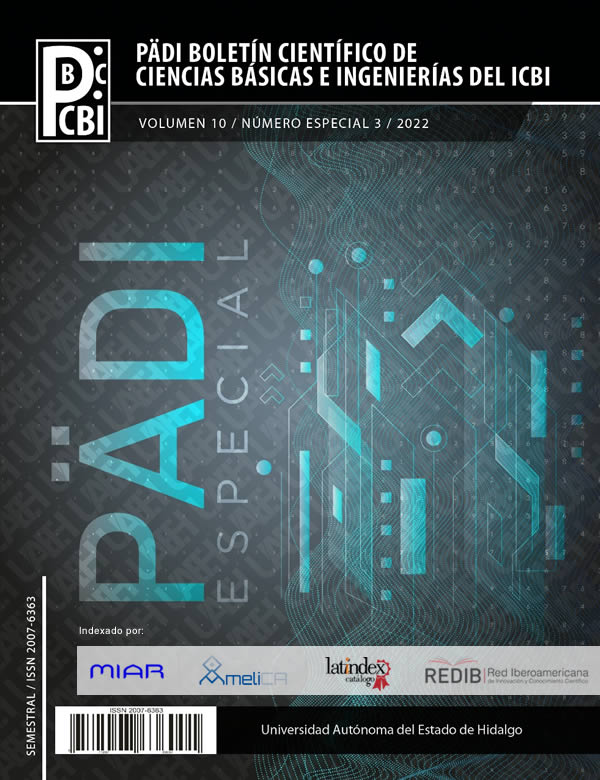Automatic detection of fake news using traditional textual representations and solutions based on deep learning
Abstract
Fake news is created with the aim of manipulating, harming or misinforming. In recent years, this type of news has impacted negatively on different sectors of society, such as politics, health, and social movements. Its severity increases due to its wide and fast propagation, which far exceeds the speed at which a human can control or contain this phenomenon. The search for solutions to combat the spread of false information has motivated the development of computational methods for automatic detection. Commonly, such approaches are designed from a natural language processing perspective. In particular, this paper studies the impact of using various representations of news content features to detect fake news in Spanish with machine learning techniques, including deep architectures.
Downloads
References
Ahn, Y.-C. and Jeong, C.-S. (2019). Natural language contents evaluation system for detecting fake news using deep learning. In 2019 16th International Joint Conference on Computer Science and Software Engineering (JCSSE), pages 289–292.
Álvarez, N., Pico, P., and Holgado, J. (2021). Detección de noticias falsas en redes sociales basada en aprendizaje automático y profundo: Una breve revisión sistemática. RISTI - Revista Ibérica de Sistemas e Tecnologías de Información, 41:632–645.
Amine, B. M., Drif, A., and Giordano, S. (2019). Merging deep learning model for fake news detection. 2019 International Conference on Advanced Electrical Engineering (ICAEE), pages 1–4.
Bonet-Jover, A., Piad-Morffis, A., Saquete, E., Martínez-Barco, P., and García Cumbreras, M. A. (2021). Exploiting discourse structure of traditional digital media to enhance automatic fake news detection. Expert Syst. Appl., 169:114340
Choudhary, A. and Arora, A. (2021). Linguistic feature based learning model for fake news detection and classification. Expert Systems with Applications, 169:114171.
De, A., Bandyopadhyay, D., Gain, B., and Ekbal, A. (2021). A transformer based approach to multilingual fake news detection in low-resource languages. ACM Trans. Asian Low-Resour. Lang. Inf. Process., 21(1).
Gómez, H., Posadas, J., Bel, G., and Porto, C. (2021). Overview of fakedes at iberlef 2021: Fake news detection in spanish shared task. Procesamiento del lenguaje natural, (67):223–231.
Goldstein, A. (2021). Socialmedia engagement with deceptive sites reached record highs in 2020. Technical report, The German Marshal Fund of the United States.
Horne, B. D. and Adali, S. (2017). This just in: Fake news packs a lot in title, uses simpler, repetitive content in text body, more similar to satire than real news.
Ireton, C. and Posetti, J. (2018). Journalism, fake news and disinformation: handbook for journalism education and training. UNESCO, France.
Liu, H. (2019). A location independent machine learning approach for early fake news detection. 2019 IEEE International Conference on Big Data (Big Data), pages 4740–4746.
Martínez, K., Alvarez, A., and Arias, J. (2021). Fake news detection in spanish using deep learning techniques.
Maslej, V., Sarnovsky, M., and Butka, P. (2019). Deep learning methods for fake news detection.
Meel, P. and Vishwakarma, D. (2020). Fake news, rumor, information pollution in social media and web: A contemporary survey of state-of-the-arts, challenges and opportunities. Expert Systems with Applications.
Mottola, S. (2020). Las fake news como fenómeno social. análisis lingüístico y poder persuasivo de bulos en italiano y español. Discurso y Sociedad, 14(3):683–706.
Nordberg, P., Kavrestada, J., and Nohlberg, M. (2020). Automatic detection of fake news. CEUR Workshop Proceedings, 2789(23):168–179.
P, D., Chakraborty, T., Long, C., and Kumar, S. (2021). Data Science for Fake News, volume 42. Springer.
Patwa, P., Sharma, S., Pykl, S., and Guptha, V. (2021). Fighting an infodemic: Covid-19 fake news dataset. CONSTRAINT-2021.
Posadas, J., Gomez, H., Sidorov, G., and Escobar, J. (2019). Detection of fake news in a new corpus for the spanish language. Journal of Intelligent and Fuzzy Systems, 36(5):4868–4876. Publisher Copyright: © 2019 IOS
Pérez, V., Kleinberg, B., Lefevre, A., and Mihalcea, R. (2017). Automatic detection of fake news.
Santiago, R., Adame, C., and Palacios, C. (2019). Reporte sobre las campanas de desinformación, noticias falsas, su impacto en el derecho de la libertad de expresion. pages 10–12. ´
Saquete, E., Tomas, D., Moreda, P., Martínez-Barco, P., and Palomar, M. (2020). Fighting post-truth using natural language processing: A review and open challenges. Expert Systems with Applications, 141(112943).
Shu, K., Wang, S., Lee, D., and Liu, H. (2020). Mining Disinformation and Fake News: Concepts, Methods, and Recent Advancements, pages 1–19. Springer International Publishing, Cham.
Sitaula, N., Mohan, C. K., Grygiel, J., Zhou, X., and Zafarani, R. (2019). Credibility-based fake news detection.
Spasova, R. (2017). Desarrollo y evaluacion de métodos deselección de características para la predicción de eventos adversos en pacientes polimedicados.
Sued, G. and Rodriguez, M. (2020). Noticias falsas en facebook: narrativas, circulacón y verificación. Los casos de Argentina y México. Estudios sobre el Mensaje Periodístico, 26(3):1229–1242.
Verma, A., Mittal, V., and Dawn, S. (2019). Find: Fake information and news detections using deep learning. In 2019 Twelfth International Conference on
Contemporary Computing (IC3), pages 1–7.
Xue, J., Wang, Y., Tian, Y., Li, Y., Shi, L., and Wei, L. (2021). Detecting fake news by exploring the consistency of multimodal data. Information Processing and Management, 58(5):102610.
Zhou, X., Jain, A., Phoha, V. V., and Zafarani, R. (2020). Fake news early detection: A theory-driven model. Digital Threats, 1(2).
Zhou, X. and Zafarani, R. (2020). A survey of fake news. ACM Computing Surveys, 53(5):1–40.












